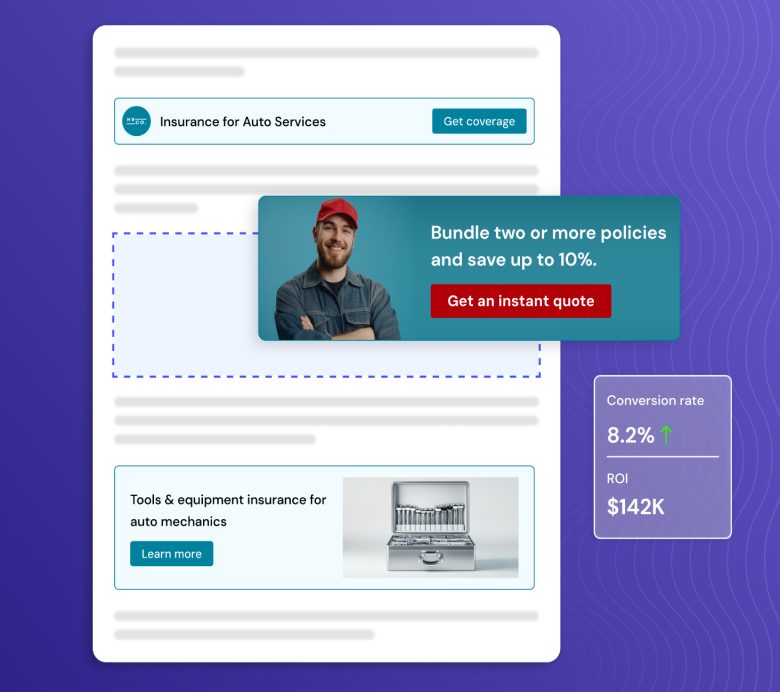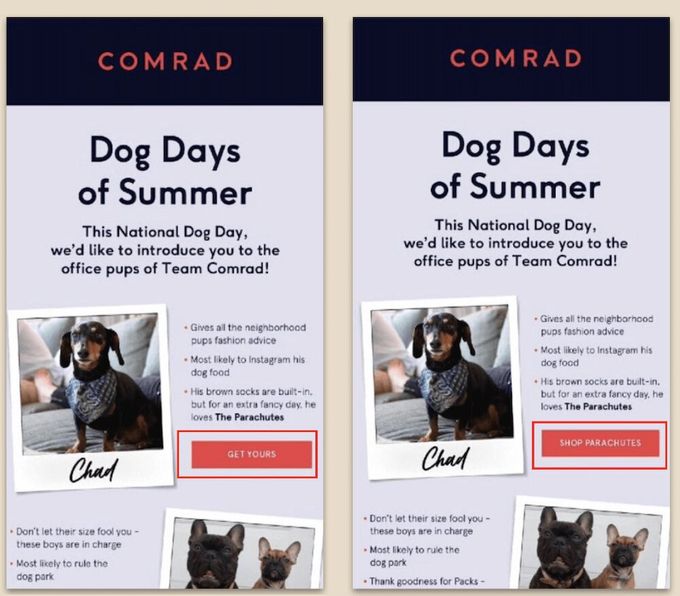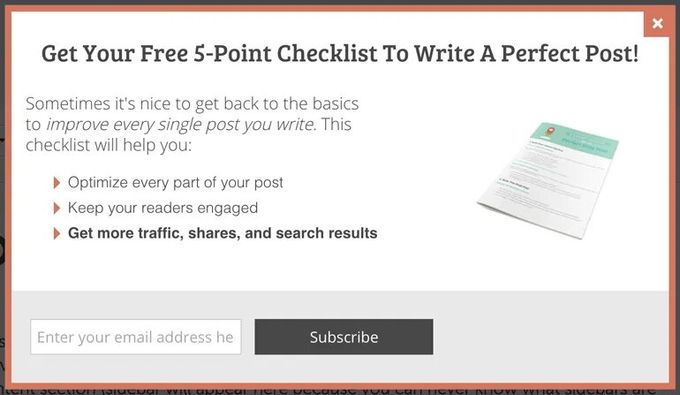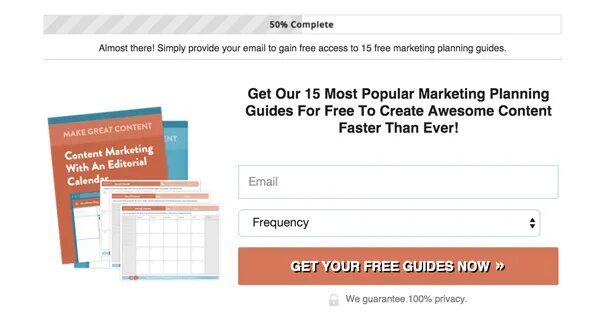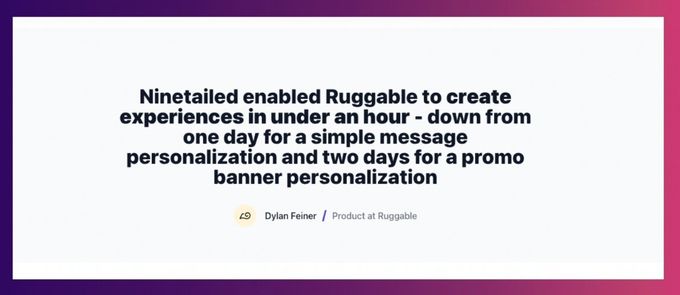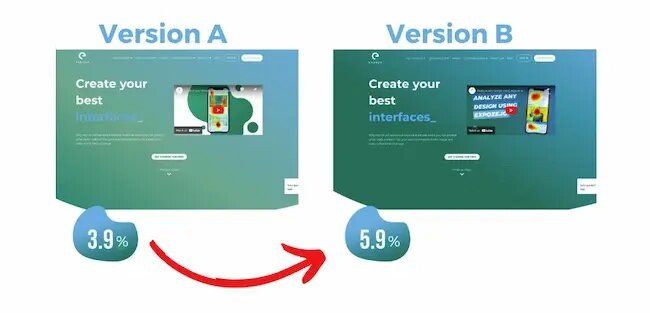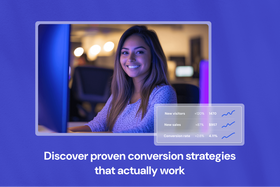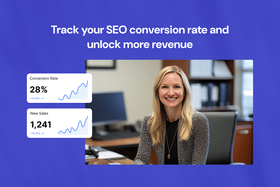What is CRO testing? (+ how to do it right in 2026)
Want to boost your website conversions without guesswork? CRO testing reveals exactly what turns visitors into customers.
Updated April 4, 2025
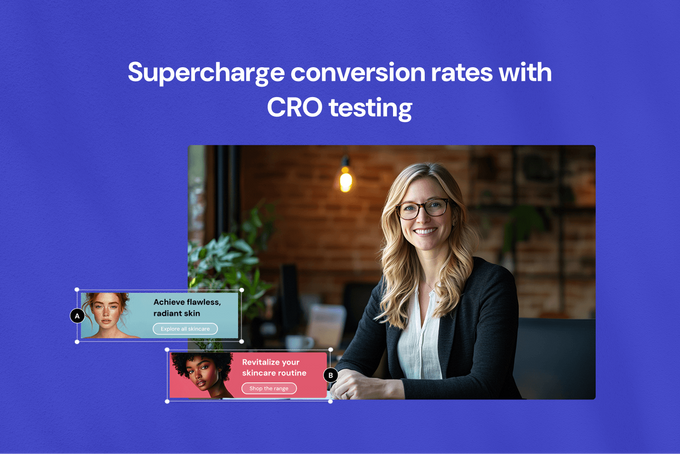
Conversion rate optimization (CRO) testing is the cornerstone of successful digital marketing strategies. By systematically experimenting with different elements on your website, you can discover what truly resonates with your audience and drives them to take action.
Whether you're looking to increase sign-ups, purchases, or engagement, effective CRO testing removes the guesswork and lets data guide your decisions.
In this article, we'll explore what CRO testing is and how to conduct them properly and provide actionable examples to help you optimize your conversion rates.
Key takeaways
- CRO testing helps identify what persuades your audience to convert by comparing different versions of website elements.
- The most effective CRO testing follows a structured approach: identify opportunities, set clear goals, form hypotheses, and analyze results.
- Focus on testing one variable at a time to accurately determine what drives conversion improvements.
- Regular CRO testing helps you keep improving your conversion rates over time.
What is CRO testing?
CRO testing is the methodical process of testing different elements on your website to determine which versions drive more conversions. At its core, CRO testing is about understanding your visitors better—what motivates them, what concerns them, and what compels them to take action.
For example, imagine you have a landing page promoting your email newsletter. You might test two different headlines: one emphasizing the educational value ("Learn Expert Strategies Weekly") and another highlighting the practical benefits ("Boost Your Conversion Rates by 27%").
By directing equal portions of your traffic to each version and measuring which one generates more sign-ups, you gain valuable insights into what messaging resonates with your audience.
Unlike basic tweaks you might make on your website based on intuition or trends, CRO testing relies on empirical evidence to guide your optimization efforts.
» Try these CRO best practices to turn traffic into sales.
Common types of CRO tests
Several testing methodologies can help you optimize your conversion rates. Each has distinct advantages depending on your specific goals, available traffic, and technical resources.
1. A/B testing (split testing)
A/B testing involves comparing two versions of a single element while keeping everything else constant. Version A is your control (current version), and version B is the challenger (new version).
This approach is ideal for testing simple hypotheses and drawing clear conclusions about which version performs better.
» Curious about SEO impact? Learn how to conduct proper SEO A/B tests in our guide.
2. Multivariate testing
Unlike A/B testing, multivariate testing examines how multiple variables interact with each other. For instance, you might simultaneously test different headlines, images, and call-to-action buttons to see which combination works best.
This method requires significantly more traffic to reach statistical significance but provides more comprehensive insights about element interactions.
» Automatically test and optimize CTAs on all your content pages with Entail CRO.
3. Split URL testing
Split URL testing directs traffic to completely different versions of a page (hosted at different URLs) rather than changing elements on the same page. This approach is particularly useful for testing major redesigns or drastically different layouts when changes are too extensive for simple A/B testing.
4. Sequential testing
Sequential testing involves testing different versions one after another over time rather than simultaneously. This approach is useful when you don't have enough traffic to split between multiple variations or when you need to make urgent changes but still want to measure their impact over time.
5. Multi-armed bandit testing
This advanced testing method automatically allocates more traffic to better-performing variations during the test itself. Multi-armed bandit testing uses machine learning algorithms to optimize for conversions in real-time. This makes it particularly valuable for short-lived campaigns or when opportunity costs are high.
How to perform a CRO test
Successful CRO testing follows a structured approach. Here's a step-by-step guide to conducting effective tests that deliver actionable insights.
1. Identify opportunities for improvement
Begin by analyzing your current conversion funnel to identify areas with potential for improvement. Look for pages with high traffic but low conversion rates, significant drop-off points, or user experience issues revealed through heatmaps, session recordings, or user feedback.
Tools like Google Analytics, Hotjar, or Crazy Egg can help pinpoint specific problem areas. Focus on pages that have the biggest impact on your bottom line, such as product pages, landing pages, or checkout processes.
READ MORE: What is a conversion path?
2. Set clear, measurable objectives
Define precisely what you aim to achieve with your test. Your goal should be specific, measurable, and tied to tangible business results. For example, instead of a vague goal like "improve the checkout page," aim for something specific like "increase checkout completion rate by 15%."
Also, determine which metrics will indicate success. Common conversion metrics include:
- Conversion rate
- Click-through rate on CTAs
- Form completion rate
- Average order value
- Cart abandonment rate
3. Formulate a hypothesis
Based on your analysis and objectives, develop a clear hypothesis that states:
- What element you're changing
- How you're changing it
- Why you believe this change will improve conversions
- What result you expect to see
A well-structured hypothesis might look like this: "By changing our primary CTA button from green to red, we expect to see a 10% increase in click-through rate because red creates more visual contrast on our page and has been shown to create a sense of urgency."
4. Create test variations
Design the variations you'll test based on your hypothesis. Keep these principles in mind:
- Focus on testing one variable at a time (unless conducting multivariate tests)
- Ensure variations have meaningful differences
- Maintain consistency with your brand guidelines
- Consider how each variation affects user experience
5. Run the test
Launch your test and allow it to run until you've gathered enough data to make statistically significant conclusions. Several factors affect how long you should run a test, including:
- Your traffic
- Current conversion rates
- The minimum detectable effect you're looking for
- Seasonal fluctuations
- Business cycles
As a general rule, aim to run tests for at least two weeks and until you've recorded at least 100 conversions per variation. This helps account for day-of-week effects and provides enough data for reliable analysis.
6. Analyze results and implement changes
Once your test is done, analyze the results to determine if your hypothesis is correct. Look beyond just the primary metric—examine how the variations affected different segments of your audience and secondary metrics as well.
If a variation proves successful, implement it permanently and document what you learned. If the test was inconclusive or negative, analyze why and use those insights to inform future tests. Remember, even "failed" tests provide valuable information about your users' preferences and behaviors.
» Try these top CRO tools to supercharge your conversions.
CRO testing examples
Let's explore five common CRO tests that can significantly impact your conversion rates.
1. Call-to-action tests
CTAs are often the final trigger point for conversions, making them critical elements to optimize. Even small changes to your CTAs can dramatically impact conversion rates.
In an example from Klaviyo, two email variations with identical content but different CTA buttons were tested: "GET YOURS" versus "SHOP PARACHUTES."
By testing only the CTA text while keeping all other elements constant, you can clearly determine which approach resonates better with your audience.
When testing CTAs, consider experimenting with:
- Button color, size, and shape to create a better visual hierarchy
- CTA copy and action verbs ("Buy Now" vs. "Get Started" vs. "Yes, I Want This!")
- Button placement (above the fold, mid-page, or at the bottom)
- Adding urgency indicators ("Limited Time Offer")
- Number of CTAs on a page (single, focused CTA vs. multiple options)
» Explore these steal-worthy call to action examples that drive real results.
2. Headline tests
Your headline is often the first element visitors see and significantly impacts whether they engage further. Consider testing:
- Benefit-driven vs. feature-focused headlines
- Question vs. statement headlines
- Including numbers or statistics
- Length and specificity
For example, "Increase Conversions With Our Solution" vs. "How Our Platform Helped 1,203 Businesses Boost Conversions by 37%."
3. Form optimization
Forms are direct conversion points and often experience high abandonment rates.
When offering content upgrades or lead magnets, test bundle options too. GetResponse gives us an example of a test from CoSchedule. It shows that offering multiple related resources in a content bundle nearly doubled opt-in rates compared to a single content upgrade (6.08% vs. 3.38%).
Version 1
Version 2
Test variations like:
- Number of fields (shorter forms typically convert better)
- Field order and grouping
- Single-page vs. multi-step forms
- Inline validation and error messaging
- Security badges and reassurance text
4. Social proof placement
Social proof builds trust and reduces perceived risk, making it a critical conversion factor. Here are two examples from Contentful.
Version 1
Version 2
When testing social proof elements, consider experimenting with:
- Customer testimonial formats (text-based, video testimonials, or social media embeds)
- Specificity of testimonials (generic praise vs. detailed accounts that address common objections)
- Placement relative to key decision points and CTAs
- Displaying logos or images of notable clients or customers
- Showing real-time statistics ("43 people purchased this today" or "12 others are viewing this item")
- Testing personalized vs. original testimonial presentations
5. Page layout and visual hierarchy
How information is organized on your page guides visitor attention and can significantly affect conversion rates. Background visuals, contrast, and overall layout all influence where users focus and how they interact with your content.
HubSpot shows us how Expoze.io did this with a simple background and contrast test on their homepage. After identifying readability issues, they improved visual hierarchy using AI-generated eye tracking to optimize their design.
The results were impressive: 40% increased attention to key page sections and 25% higher CTA clicks—without changing the CTA itself. This shows how layout improvements alone can dramatically impact conversion elements.
When conducting page layout tests, consider experimenting with:
- Single-column vs. multi-column layouts
- Background visuals and contrast levels
- Content chunking and scannable formats
- White space distribution
- Product image size and placement
- Mobile-specific layouts
Keep testing and improving
CRO testing thrives as an ongoing practice, not a one-time effort. Every test, regardless of outcome, provides valuable user insights. By approaching CRO testing systematically, you'll improve immediate metrics while gaining a deeper understanding of your audience.
» Get tailored expert guidance about CRO testing.
